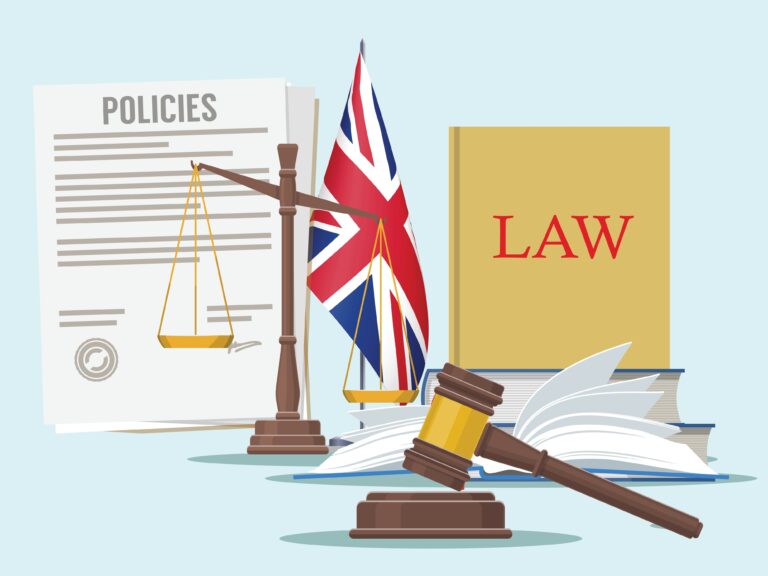Close Enough? The Vicarious Liability Connection
Jonathan Wheeler delivered a talk to the APIL conference at the Celtic Manor Hotel, Newport, South Wales on the 19th April 2012. This is the background paper which supported his lecture.
Close enough? The vicarious liability connection
Vicarious liability is a doctrine of strict liability on the part of a defendant who is faultless and who becomes liable purely by virtue of the relationship between himself and the tortfeasor as his employee, servant or agent. Because of this, the courts often see the doctrine as somewhat punitive on an otherwise blameless defendant and as such judges are exhorted to keep the concept within confined limits. (“The principle of vicarious liability is not infinitely extendable” said Lord Steyn in Bernard v Attorney General of Jamaica [2004] UKPC 47, quoted with approval in two very recent cases, EL v Children’s Society [2012] EWHC 365 (QB), and XVW & YZA v Gravesend Grammar School for Girls & Adventure Life Signs Ltd [2012] EWHC 575 (QB)).
In cases involving criminal wrongdoing (generally assault but there have been cases involving allegations of fraud) there were problems historically in suing a defendant vicariously: It is obviously highly unlikely that a tortfeasor’s job description or contract for services would include the use of violence or some other criminal activity as one authorised by the defendant. However the judgment in Lister v Hesley Hall Ltd [2002] 1 AC 215 developed the concept of a defendant being liable for a wrong if this was ‘closely connected’ to the employment or services for which the tortfeasor was engaged. In that case the defendant boarding school was sued because the claimants had been sexually abused by the warden who had been employed to care for them as pupils. “The question is whether the warden’s torts were so closely connected with his employment that it would be fair and just to hold the employers vicariously liable”, said Lord Steyn in the leading judgment. Others on the judicial panel expanded on the concept: Lord Clyde felt that “the sufficiency of the connection may be gauged by asking whether the wrongful actings can be seen as ways of carrying out the work which the employer has authorised”. Lord Millett added that an employer would be liable “only if the risk is one which experience shows is inherent in the nature of the business”. In finding for the claimants, their Lordships explained that had the abuser in fact been the groundsman, employed by the school but without any duties to take care of the pupils who resided there, the claim would have failed. In a later case (Dubai Aluminium Company Ltd v Salaam [2003] AC 366) Lord Nicholls said that the whole concept of close connection was a “value judgment” and this is precisely why it has become such a fertile area of law: Each case will succeed or fail on its own facts and there appear to be no hard and fast rules as to when an employee’s wrongful act will be found to be closely enough connected to the work for which he was engaged by his employer.
Initially close connection was interpreted in a broad way and much to the claimants’ benefit. In Bernard v Attorney General of Jamaica (supra), the employers of an off-duty police officer were found liable to a member of the public who was shot by that officer with his service revolver when the claimant had refused a request to hand over a public telephone. In Mattis v Pollock [2003] 1WLR 2158, a night club bouncer had an argument with a customer. He went home, got a knife, and returned to the club, followed the customer outside and stabbed him. The night club was vicariously liable as it was felt that the act was a “culmination” of the earlier altercation and there was a sufficiently close connection to the bouncer’s employment – he was after all employed to use reasonable force to promote the security of the club and on occasion he would be required to eject customers to that end. In Y v London Borough of Wandsworth [2006] 1 WLR 2320, a school was vicariously liable for the sexual assaults inflicted on a pupil by his form tutor, even though the assaults occurred off school premises. Much emphasis was laid on the pastoral duties inherent in the job of a form tutor, so as to allow the close connection to be made.
The concept therefore appeared to be developing nicely until this year when a flurry of appeals muddied the waters. Whilst each case turns on its own facts, it is the way those facts are interpreted which is the key.
In Weddall v Barchester Healthcare Ltd [2012] IRLR 307, the claimant was the deputy manager of a care home. When one of his staff phoned in sick, he telephoned another employee who had not been on the rota to see if he could provide cover. The employee refused, as it was his right to do. He had had a bad day, and by 6pm when the telephone call was made he was drunk. He was verbally abusive to the manager down the phone. He then decided to cycle to the home, where he saw the deputy manager and physically assaulted him, for which he was later criminally convicted. In the civil claim, the appeal court ruled that the attack could not have been closely connected to the man’s employment because he was off-duty (but Bernard v Attorney General?) and the assault took place some time after the telephone call (but Mattis?). It was a drunken act, separate and distinct from his employment as a care worker, although it was accepted that he would sometimes have to use force to restrain patients in the course of his job.
Another assault at work was responsible for the claimant bringing a claim in the case of Wallbank v Wallbank Fox Designs Ltd, which was conjoined and reported with Weddall. Mr Wallbank was the managing director of a company which made bed frames. On the factory floor, he reasonably criticised an employee’s work which involved powder coating the bed frames. The employee turned round and pushed his boss away with such force that he landed on a table 12 feet away. Again, the employee was convicted of assaulting the claimant in the Crown Court. In the civil claim, the Court of Appeal found for the claimant, as the attack was a direct and immediate response to the criticism (albeit an irrational one). The temporal and spatial proximity of the assault appears to have been the deciding factor here.
All the cases we have looked at so far are ones where there was no doubt that a defendant could be held vicariously liable as there was no question over the nature of the relationship between tortfeasor and defendant – all the tortfeasors were clearly employees. However another set of recent cases have been concerned with establishing whether there is a relationship giving rise to vicarious liability on the part of the defendant at all, and close connection plays its part here too.
In JGE v The Trustees of the Portsmouth Roman Catholic Diocesan Trust & another [2012] 1 All ER 723, the Catholic church defended a claim where it was alleged that a priest had sexually abused a child, on the basis that a priest was not an employee of the diocese or bishop. The matter came before MacDuff J as a preliminary issue. The judge accepted that there was no formal employment contract or terms of engagement; that under canon law, the priest was entitled to carry out his ministry as he saw fit, with no supervision from his bishop who was there merely to advise. The diocese didn’t pay its priests, as they were remunerated from the collection plate and other income derived from the parish, and the priest was considered an office holder not an employee by HM Revenue and Customs. Also, whilst the bishop had the power to deploy the priest in a parish of his choosing, he did not have the power to dismiss him, which could only be exercised by the Pope. Despite all these obstacles, the judge was not deterred from finding that indeed the church was vicariously liable for the priests’ actions, and he adopted the close connection test in his evaluation. He explained that to consider whether a tort is closely connected to the tortfeasor’s employment is in effect stage two of the test, whereby stage one is to consider whether there is a sufficiently close connection between the tortfeasor and the defendant for there to be a relationship which gives rise to vicarious liability: In this case the priest was appointed by the church to undertake its work for its benefit, and he had been trained and ordained by the church for this purpose. The church gave him the authority to act, gave him a place to preach, a place to live and clerical robes to wear. “He had immense power handed to him by the defendants. It was they who appointed him to the position of trust which (if the allegations be proved) he so abused” (MacDuff J). With a clear nod to their Lordships in Lister, it was a question of whether it was fair and just to hold the defendant vicariously liable. In this case it was, because in the course of furthering the church’s ‘business’ the priest was given power and authority in the local community, and there was an inherent risk that that power could be misused.
In EL v Children’s Society (supra), another sexual abuse case, a different conclusion was reached. The claimant sued the operators of a children’s home because he had been abused by the house parent’s son. It was claimed that the son had been entrusted with running the home when his parents were out, allowing him power over the children in his charge, hence the defendant was liable vicariously. This was rejected by the High Court which in fact found that the son was never in charge of the home and his authority over the residents was purely by virtue of him being the houseparent’s son; as such he was no employee, servant or agent of the defendant. In XVW & YZA v Gravesend Grammar School for Girl & Adventure Life Signs Ltd(supra), two school pupils sued their school and a travel company which had co-organised an educational expedition to Belize in which the pupils took part. During the trip the girls were raped by a man on whose farm they were staying, who had allocated some work to them during their stay, and had the power to licence the girls to stay on his farm. Neither the school nor the travel company were vicariously liable for his actions, as it would not have been fair to imply a relationship between either defendant and the man akin to employment. The “highly fact sensitive nature of the enquiry” was emphasised. In both these cases (and inWeddall (supra)) the generous nature of the doctrine of vicarious liability to claimants and the need to control its scope were cited as important issues to bear in mind, and featured as part of the rationale for each decision.
Jonathan Wheeler, Bolt Burdon Kemp
T: 020 7288 4837
E: jonathanwheeler@boltburdonkemp.co.uk










